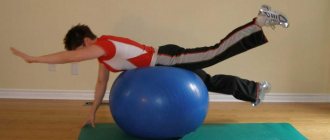What is fine motor skills and why is it so important? At what age to develop it? Useful exercises for the development of fine motor skills in children. How to develop it for adults. Signs of impairment How to restore: exercises, techniques
Good fine motor skills are not only dexterous hands and fingers, but also correct speech, beautiful handwriting, and also proper brain function. It must be practiced from a very early age in children, and not forgotten in adulthood; it is no less important for the elderly, so that speech and motor skills are not lost (this is especially true for those who have suffered a stroke).
What are fine motor skills and why are they so important?
This is a complex of coordinated actions and movements of the arms, fingers, and legs. This is not just motor activity, because all movements of the limbs occur under the control of the brain and are directly related to its work.
Fine motor skills combine processes in the motor, nervous, and visual systems.
Benefit
- Since several systems of the body are involved in the process of activity, the development of fine motor skills literally mobilizes the whole body, developing them all together and separately.
- The work of several parts of the brain at once contributes to its development, rapid processing of information, and the formation of new connections between neurons.
- The nerve endings on the palms and feet are connected to parts of the body and organs, which means that the impact (via nerve impulses) occurs on them. The muscles of the limbs and fingers develop, dexterity and activity of the arms and legs accelerate, handwriting becomes clearer and better.
- Speech development occurs because the areas in the brain responsible for movement and speech are very close. Fine motor skills exercises are necessary for children who are still learning to speak, and for older people, in whom this skill may be impaired due to serious illnesses, especially stroke. According to statistics, impairment of motor function after strokes occurs in 70% of cases, and in 50% it does not recover even after six months. In such a situation, it is very important to exercise regularly.
- Memory improves. This happens due to increased brain activity.
- Imagination and creativity develops. It has been proven that working with real visual images improves spatial thinking, the ability to imagine something fictitious, and come up with non-standard solutions to problems.
- The ability to clearly plan actions develops. According to one theory, the development of fine motor skills teaches the brain to think through its actions before performing it and to do it very quickly.
Do not miss
- Do not miss
5 simple brain must-haves to maintain intelligence for a long time
Determining the level of coordination
There are many ways to determine the level of coordination. But to assess general physical readiness, only two will be enough.
- Almost every member of the stronger sex who has undergone a medical examination for military service is familiar with this method. We stand up straight with our arms stretched out in front of us. We close our eyes and alternately try to touch the tip of our nose with the index finger of each hand.
- We try to maintain balance while standing on one leg. At the same time, we take the second leg back, holding it with our hand. We extend our free arm forward, parallel to the floor. After holding this position for half a minute, we change legs.
Not everyone succeeds in this, but that is why failures exist, so that you can learn to overcome them. Of course, it is better to develop dexterity and coordination from an early age, because then our body is more flexible and responsive to any training. However, even if you have crossed the threshold of 25-30 years, nothing (except your own passivity) will prevent you from developing a lightning-fast reaction. Let's see by what means this can be achieved.
Useful exercises for developing fine motor skills in children
Games with small objects
You can take everything you have at home - cereals, peas, nuts (especially since kids love to be next to their mother in the kitchen), buttons, beads, pebbles. But such activities should be carried out very carefully, without leaving the child unattended, so that he does not accidentally swallow, inhale a small object, put it in his nose, or in any way injure himself.
Among the games:
- Sorting items by color, shape, size.
- Folding it into a bottle with a narrow neck (you can do this not with your fingers, but with tweezers, but not sharp) or transferring it into molds.
- Drawings from grains.
Finger games
Perfect for toddlers and delight children up to primary school age. You can use your fingers to show (and he must repeat) various characters and actions, and supplement this with nursery rhymes. At the same time, he learns to understand concepts such as “up”, “down”, “forward”, “backwards”, and also learns counting. It is important that the hands and all fingers are involved.
You can see an example of finger play in the video:
Modeling
Plasticine, whether classic or now fashionable, non-stick to the hands, salt dough, clay, sand - any of these means have a great effect on motor skills, and at the same time develops imagination. For small children, sculpting individual parts - balls, cubes - is suitable; for older children, the task can be made more difficult.
Mosaic
For younger children, simply inserting the mosaic into the base is enough. Seniors can invent or repeat pictures.
Abacus
It’s even useful to simply rearrange the rings from one end to the other and collect them in groups. With older children, it is worth adding learning numbers to this.
Drawing
It is necessary for fine motor skills and for the development of harmony between the work of the left and right hemispheres of the brain. Helps improve motor activity of the hands and develop creative abilities.
Children will also benefit from:
- unwinding, winding threads;
- games with paper clips;
- screwing nuts onto bolts;
- screwing the lids;
- making crafts;
- tying shoelaces;
- pouring water into different containers;
- self-cleaning of fruits;
- collecting puzzles;
How to learn to do tricks with cards: step-by-step instructions, secrets
These are perhaps one of the most common tricks that even novice illusionists can do. That is why now we will look at the most interesting of them.
- Tricks with 4 kings . A simple trick that even the most inexperienced fakir can perform. In this act, it is very important not only to show magic, but also to tell a story in a captivating way that, in addition to informing the audience, also distracts it.
- So, the first thing you need to do is pull out all the kings from the deck, as well as any 3 more cards.
- We fold the cards in our hands in such a way that only the kings can be seen by the guests. Additional cards must go to the kings.
- Next, we begin to tell the story of a bank robbery. The point is that the kings want to rob a bank, and they want to enter the premises through the roof of the building.
- At this stage, all 7 cards must be added to the rest of the deck. The back of the cards should be on top, exactly like the 3 additional cards. We say that the kings ended up on the roof.
- Now you take the first card from the top (the spare one, but people will think it's a king because they don't know about the extra cards). At the same time, be careful and do not show anyone what kind of card it is. Say that this is one of the kings that will stand on the 1st floor and place the card somewhere at the bottom of the deck.
- We send the second king (also a spare card) to the 2nd floor, to the middle of the deck.
- The 3rd king (last spare card) will be on guard in the basement, place it in the middle of the deck.
- The last king (really the king, the first in the deck) remains on the roof, show this card to the audience.
- The king, who was observing everything on the roof, reports that the police are heading towards them and everyone must come to him immediately. Tap the deck 4 times, supposedly calling all the kings, and then reveal the last 4 cards
- They should all be kings.
- After this, invite anyone to see that the deck is not fake and that there are no more kings in it.
- The most important thing in this trick is to quietly take 4 kings and 3 more cards, and then quietly fold a fan of cards.
Card trick
- Here's another simple card guessing trick.
- You hold a regular deck of cards in your hands and show it to the audience
- Next, anyone must choose a card and put it on top of the deck, while you, of course, should not see the card
- Now we remove the deck and place the lower part on top. During this manipulation we look at the bottom card of the deck, it will be a guide for us
- Then we lay out the deck of cards one by one, face up. The card we need will lie in front of the bottom card of the deck that we memorized
- To prevent the trick from failing, do not rush into laying out the cards. In this case, even if there is some kind of hiccup, it will be attributed to the desired scenario
How to learn to do tricks with fingers: step-by-step instructions, secrets
Tricks with hands and fingers deserve special attention. Dexterity and speed of movement are always in first place here. It is appropriate to show such tricks at various children's events at home. You should refrain from them on the street and if spectators are standing too close to you.
- Severed finger. This trick is quite simple, however, all movements must be done quickly, clearly, without hesitation
- Spectators should not be able to see the back of the hand when performing this trick.
- Show your hands to the audience, twirl them
- We show guests one hand with the thumb pointing up
- Next, we place a second hand on this hand so that we can use it to grab the thumb of the first hand into a fist.
- Make a fist with your index and middle fingers
Using your fingers to do tricks
- Now we unclench our fist a little, quickly press the thumb to the palm, and place the thumb of the other hand in its place. In this case, his nail should be slightly visible between the index and middle fingers
- After this, trying, making an effort, “tear off” your finger with a sharp movement, showing your hand, the thumb of which will be pressed to the palm
- Now we return the finger to its place. Initially, we press our hands together and carefully but quickly straighten our thumb into a fist. Next, remove the fist and pull out the thumb of the second hand, which is shown between the middle and index fingers
- That's it, the finger is in place, and the audience is delighted
At first glance, the trick may seem difficult, but in fact it is not, it just takes a little practice. And one more very important point: the acting of your face should hide all the roughness. Don’t be afraid to show emotions during a trick, scream when you “tear off” your finger and rejoice when it appears in place again. All these little things will force viewers to pay attention only to the necessary details.
Content
- 1 Agility, Speed and Plyometrics Exercises 1.1 Finger Positions
- 1.2 Athletic pose
- 1.3 Swing your arms (like when running)
- 1.4 Running in place
- 1.5 Side Jump
- 1.6 Squat Jump
- 1.7 Fast sprint
- 1.8 Back and forth
- 1.9 Fast side step walking
- 1.10 Walking with an extended step touching the floor
- 1.11 Side step walking with push-ups
- 1.12 Walking with a side step with a jump
- 1.13 Running forward and backwards
- 1.14 Touching the helmet with the toe
- 1.15 Full rotation around the helmet
- 1.16 Jump over a helmet
- 1.17 Jump over a helmet with a turn
- 1.18 Full rotation around the helmet with the toe touching it
- 1.19 Full rotation around the helmet with a bear gait
- 1.20 Sprint with hand touching helmet
- 1.21 Crossing over a helmet
- 1.22 Sprint with the toe touching the helmet
- 1.23 Sprint with a full rotation around the helmet
- 1.24 Jump turning into sprint
How to learn to do tricks with a handkerchief: step-by-step instructions, secrets
Tricks with scarves are standard at all fakir performances, and for good reason. It is the tricks with such props that are done quite easily, however, they always make a special impression on the audience.
- So, we need a scarf, an assistant and basically nothing else, just sleight of hand and the ability to tie knots in a special way.
- You can choose any viewer as an assistant
- Next, take a scarf, it should be large enough and twist it so that you get a tourniquet
- Now we take a twisted scarf and throw it over the person’s hand, doing it from the bottom up. That is, the fabric of the scarf will hold the hand from the underside
- We should place the left end of the fabric in our left hand between the index and middle fingers. Hold the right end arbitrarily
- Next, we place the right end of the scarf between the ring and middle fingers. At this moment there is already an air loop on the viewer’s hand
- The right end, after placing it between the indicated fingers, should face towards the thumb and lie on the left end
Using a scarf for tricks
- Press your middle finger into your palm. At this time, the thumb and middle fingers of the left hand hold the right end of the fabric
- Take the left end of the scarf, thread it through the resulting loop and, continuing to hold the right end with your left hand, tighten the loop
- Visually it will seem that one strong knot has been made on a person’s hand
- Next, we wrap the right end of the scarf around the hand in the opposite direction, after which we tie one simple knot and at the end of this manipulation we sharply tighten the knots
- At this moment, all spectators will see a miracle - the scarf, having passed through a person’s hand, will literally jump off it and tie itself into a knot in the hands of a skilled magician
The trick with the disappearance of a scarf and the appearance of a rose is also very popular, however, these tricks require special props, so we recommend that you initially hone your skills on the simplest trick presented above, and only then move on to something more complex.
How to learn to do paper tricks: step-by-step instructions, secrets
Paper tricks are exactly what a beginning illusionist needs. The props for such numbers are always available, and even a child can perform them.
- We'll start with a comic number that will help you tune the audience into the right wave. There will be no magic or sleight of hand in the room. So, you give a piece of paper and a pencil to anyone who wants it and ask them to write any words or sentences there.
- Next, ask to pass this piece of paper to any other person and promise that you will write the same thing on your piece of paper. Next, a couple of seconds of silence, you seem to be trying to guess the word and write “the same thing” on a piece of paper, then, having prepared the audience for the result, you show a piece of paper with the inscription, voice it, explaining that you fulfilled what you promised and wrote the same thing.
Now that the guests are in a joking mood, you can perform the following tricks. We will analyze the simplest and at the same time interesting of them:
- We paint a masterpiece in front of the public. So, we need to take an easel, paints, brushes, a sheet of fairly thin paper, a reproduction of a painting, oil.
- The essence of the trick is that you first wrap the picture in paper and attach it to an easel. Next, place a sheet of blank paper on it and start drawing.
- The audience sees that you are taking paint with a brush, but in fact there should also be oil on the palette. Dip the brush into the oil, as if drawing, and begin to move it over the paper.
- The paper will begin to become oily and the image of the painting will begin to appear.
- In a matter of seconds you will draw a masterpiece right in front of all the spectators.
- When doing a trick, don't forget about facial expressions and playing with the audience.
We recommend that you start with these simple tricks; they will help you learn how to behave in front of people and “play” in public. Only after you have learned how to skillfully show such illusions, move on to something more complex, where, for example, everything will depend on the dexterity of your hands and the ability to keep the audience in suspense.










